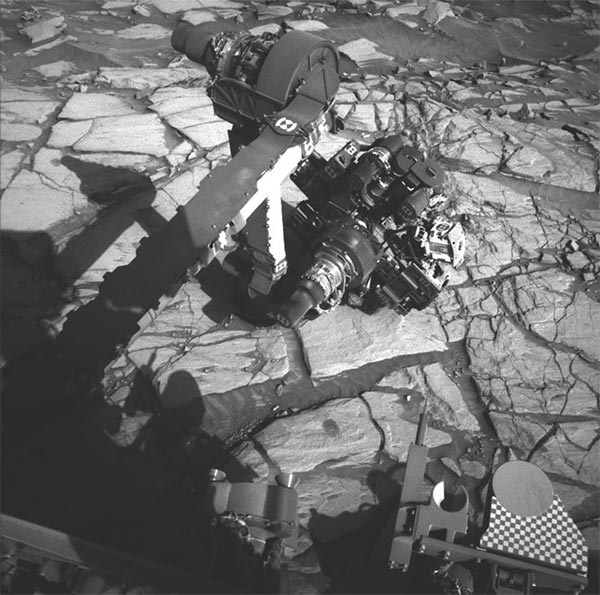Even Mars-invading robots must 'wash their hands' before working
Now on Earth, we are probably too familiar with propaganda slogans that wash their hands often with soap for at least 20 seconds to prevent the spread of disease. However, this cleanliness is not only important on the blue planet - it is even a mandatory requirement for the robots performing missions on Mars.
NASA's Curiosity Rover, a robotic exploration robot, is currently on a mission to explore and sample specimens in the Mount Sharp Mountains region of the Red Planet. Its mission is to drill deep into the soil layer, remove rock and soil fragments, and then transfer these samples to one of the two analytical tools that are pre-installed on the compartment, including the sample analysis system at Sample Analysis at Mars (SAM), and a spectrophotometer system for measuring mineral levels in a sample called Chemical and Mineralogy (CheMin), with the task of analyzing specimens to find the presence of compounds. organic as well as gases.
 Image taken by Left Navigation Camera of Curiosity Rover
Image taken by Left Navigation Camera of Curiosity Rover But the crucial "vital" requirement is that the robot control engineers must ensure that the objects obtained are completely pure, not being mixed even with a small amount of material from any sample. something else. They achieved this while collecting a specimen from the "Edinburgh" pit area on the Martian surface, specifically as follows:
"On earth, we have water and soap to keep our hands clean. So how can the Curiosity Rover robot clean the analytical equipment before performing a new sampling process? just now, we have put the robot arm on the borehole from the "Edinburgh" pit. On the robot arm is attached APXS (Alpha Particle X-ray Spectrometer, a tool used to measure the chemical elements are present), and MAHLI (Mars Hand Lens Imager, one of Curiosity's cameras) .After a few days, the robotic arm is withdrawn from the position and stowed away.
During this process, we have vigorously swung the control tower back and forth repeatedly to remove most of the sand or dust that might stick to the APXS. After that, we continued to use the Dust Removal Tool (DRT) - a metal brushing device designed to remove dust adhering to surfaces or the Curiosity Rover's analysis system. Therefore, on the next mission, APXS will measure material at the new site without being contaminated with material from the "Edinburgh" hole.
We can see the "hand washing" of the Curiosity Rover robot is quite "simple", but still relatively effective, especially in the context of the dust storm season on Mars is starting.
You should read it
- Reveal the best place to find life on Mars
- NASA reveals its latest snapshot of the Martian surface with a resolution of 1.8 billion pixels
- NASA installs the names of 10.9 million space fans on the Mars Perseverance rover
- NASA's spacecraft is about to bring the names of more than 11 million people to Mars
- NASA 'Mars' helicopter model is almost ready for the journey to conquer Red Planet
- 5 most interesting findings about Red Planet
 Announced the first comprehensive geological map of the Moon
Announced the first comprehensive geological map of the Moon A new discovery about the strange interaction between cosmic black holes and light
A new discovery about the strange interaction between cosmic black holes and light The great mystery of the Solar System has just been unlocked
The great mystery of the Solar System has just been unlocked NASA's spacecraft is about to bring the names of more than 11 million people to Mars
NASA's spacecraft is about to bring the names of more than 11 million people to Mars There will soon be a 'green vegetable garden' on the International Space Station (ISS)
There will soon be a 'green vegetable garden' on the International Space Station (ISS) Build a space telescope complex to serve the mission of finding aliens
Build a space telescope complex to serve the mission of finding aliens